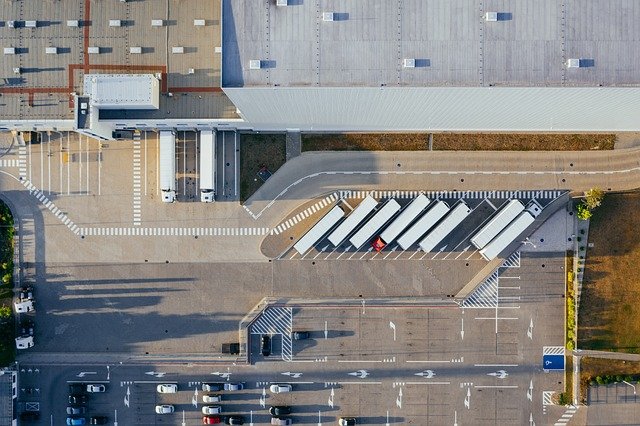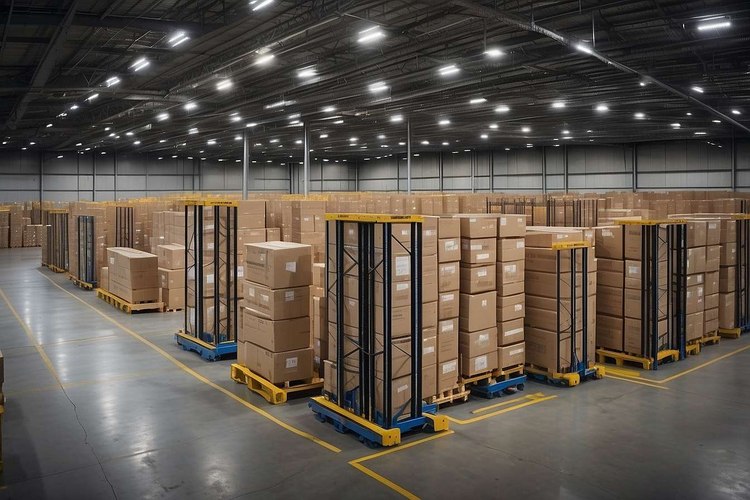Fulfillment service and 3pl logistic
In today's rapidly evolving business landscape, efficient logistics management has become a critical factor in determining success. Fulfillment services and third-party logistics (3PL) providers offer businesses of all sizes the ability to streamline their supply chain operations without investing heavily in infrastructure and personnel. These services handle the entire process from receiving inventory to storing, picking, packing, and shipping products to customers, allowing companies to focus on their core competencies while enjoying greater operational efficiency.

How Fulfillment Services Help Optimize Logistics Costs
Fulfillment services provide businesses with specialized expertise and infrastructure designed to manage logistics operations more efficiently than most companies could achieve independently. By outsourcing these functions, businesses can convert fixed costs into variable expenses that scale with their operation. Warehousing space, for example, becomes a flexible resource rather than a long-term lease commitment, allowing companies to pay only for the storage they actually use.
Beyond physical infrastructure savings, fulfillment services optimize costs through economies of scale. These providers distribute overhead expenses across multiple clients, resulting in lower per-unit handling costs. They also negotiate better shipping rates with carriers due to their aggregate volume, passing these savings on to clients. Additionally, strategic warehouse placement by fulfillment providers helps reduce last-mile delivery distances and costs, further enhancing overall logistics efficiency.
Why Fulfillment Services are Essential for Your Business Growth
As businesses expand, logistics complexity increases exponentially. Fulfillment services provide the scalability needed to support growth without operational bottlenecks. During peak seasons or promotional periods, these providers can quickly adapt to higher order volumes without requiring businesses to invest in temporary staff or additional facilities. This flexibility allows companies to pursue aggressive growth strategies without logistics constraints holding them back.
Fulfillment services also enhance customer experience through faster, more reliable shipping. Most 3PL providers operate multiple strategically located distribution centers, enabling them to deliver products more quickly to customers across wide geographic regions. Advanced inventory management systems employed by these providers ensure accurate order fulfillment and real-time inventory visibility. These capabilities translate directly to customer satisfaction, reduced cart abandonment, and increased repeat purchases—all essential elements for sustainable business growth.
Choosing the Right Fulfillment Partner for Your Business
Selecting an appropriate fulfillment partner requires careful evaluation of several key factors. First, assess the provider’s geographic coverage and warehouse locations to ensure alignment with your customer base. A fulfillment partner with distribution centers near your primary markets can significantly reduce shipping times and costs. Technology integration capabilities are equally important—the provider’s systems should seamlessly connect with your e-commerce platform, order management system, and other business applications.
Industry-specific expertise should also influence your decision. Some fulfillment providers specialize in handling particular product types, such as perishables, hazardous materials, or high-value items requiring special security measures. Service level agreements (SLAs) deserve close examination as well, particularly regarding order accuracy, processing times, inventory management, and issue resolution procedures. Finally, consider the provider’s ability to scale with your business and accommodate seasonal fluctuations without compromising service quality.
Top Fulfillment Solutions for Cost-Effective Logistics
Today’s market offers a range of fulfillment solutions designed to meet different business needs while maximizing cost efficiency. Distributed fulfillment models, which utilize multiple warehouses strategically positioned around key markets, help companies reduce shipping distances and associated costs while accelerating delivery times. Hybrid fulfillment approaches combine traditional warehousing with micro-fulfillment centers in urban areas, offering both cost efficiency for standard orders and rapid fulfillment for time-sensitive deliveries.
Technology-driven solutions like artificial intelligence-powered inventory management systems optimize stock levels and placement, reducing carrying costs and preventing both stockouts and overstocking situations. Automated picking and packing systems decrease labor costs and error rates while increasing throughput capacity. For businesses with unpredictable demand patterns, on-demand warehousing services provide flexible storage options without long-term commitments, allowing companies to adjust their logistics footprint according to current needs.
Reducing Logistics Costs with 3PL and Fulfillment Services
Working with 3PL providers offers numerous opportunities to reduce logistics expenditures across the supply chain. By outsourcing warehousing and fulfillment operations, businesses eliminate capital investments in facilities, equipment, and specialized technology. Transportation costs typically decrease as well, since 3PL providers consolidate shipments from multiple clients to negotiate volume discounts with carriers. These providers also optimize routing and modal selection, ensuring each shipment travels via the most cost-effective method.
| 3PL Provider | Service Specialization | Cost Structure | Key Cost-Saving Benefits |
|---|---|---|---|
| ShipBob | E-commerce fulfillment | Per-unit pricing plus storage fees | Multiple fulfillment centers, integrated technology platform, volume shipping discounts |
| Flexport | Global logistics solutions | Custom quotes based on volume and service level | End-to-end visibility, consolidated shipments, customs expertise |
| Shipmonk | Small to medium business fulfillment | Tiered pricing based on monthly order volume | Automated workflows, inventory management tools, discounted shipping rates |
| Fulfillment by Amazon (FBA) | Amazon marketplace sellers | Per-unit fulfillment fees plus storage | Prime eligibility, established infrastructure, returns handling |
| Red Stag Fulfillment | Specialty items (heavy, fragile, high-value) | Custom pricing based on storage and handling requirements | Low error rates, damage guarantees, specialized handling expertise |
Prices, rates, or cost estimates mentioned in this article are based on the latest available information but may change over time. Independent research is advised before making financial decisions.
Labor cost reductions represent another significant advantage of 3PL partnerships. These providers spread labor expenses across multiple clients and implement efficiency-enhancing technologies that would be cost-prohibitive for individual businesses. Their expertise in process optimization and workforce management typically results in higher productivity levels than in-house operations can achieve. Additionally, businesses avoid seasonal staffing challenges and associated recruitment, training, and management costs by leveraging the 3PL’s flexible workforce.
The Future of Fulfillment and 3PL Services
The fulfillment and 3PL landscape continues to evolve rapidly, driven by changing consumer expectations and technological advancements. Same-day and next-day delivery options are becoming standard offerings rather than premium services, requiring logistics providers to develop increasingly agile and responsive systems. Sustainable logistics practices are gaining prominence as well, with many providers implementing eco-friendly packaging solutions, electric delivery vehicles, and carbon offset programs to meet growing environmental concerns.
Technological innovation remains the primary catalyst for transformation in this sector. Advanced robotics and automation systems are increasingly common in modern fulfillment centers, dramatically improving efficiency while reducing error rates. Artificial intelligence applications are enhancing demand forecasting accuracy, inventory optimization, and route planning. Blockchain technology is beginning to address transparency and traceability challenges throughout the supply chain. As these technologies mature and become more accessible, fulfillment services will continue to offer increasingly sophisticated solutions that help businesses navigate logistics challenges while controlling costs.




